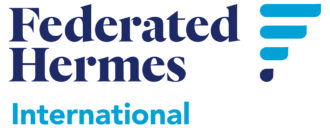Hamish Galpin is a director and head of small and mid-cap at Hermes as well as its lead manager of global small cap, while Will Pomroy is head of impact engagement for equities and lead engager in small and mid- cap equities.
The Sustainable Development Goals (SDGs) are a blueprint for a better and more sustainable future for all. It is right, therefore, that the first goal is to “end pov- erty in all its forms everywhere”. However, Covid-19 dealt a big blow to this aim, with global poverty increasing last year. Within SDG 1, the second target (1.2) states: By 2030, reduce by at least half the proportion of men, women and children of all ages living in poverty in all its dimensions according to national defini- tions. Of course, poverty is not only an issue for the developing world and the spirit of the SDGs, of leaving no-one behind, also applies to rich countries. As of 20191, the poverty rate (the share of people living with less than half the median disposable income in their coun- try) in the US was 17.8%, while in the UK it stood at 11.7%. We know the pandemic
has exacerbated pre-existing inequalities. We also know certain groups are dispro- portionately represented among the poor, including women, children, indigenous peoples and those with disabilities. They face additional barriers to escaping their predicament, such as limited access to productive resources and markets.
There is a need, therefore, to re-double efforts, international and collective, in pursuing the goal of poverty eradication. SDG 1.3 states: By 2030, ensure that all men and women, particularly the poor and the vulnerable, have equal rights to economic resources, as well as access to ownership, and control over land and other forms of property, inheritance, nat- ural resources, new technologies and financial services.
Poverty is not just about income. It is also about the access individuals have to basic services. Businesses clearly have a role to play here, not least in terms of thinking about adopting scalable and commercial models to broaden their reach.
Business response
Businesses can make a profound contribution to the achievement of this goal. They can take steps to address constraints faced by disadvantaged groups, by mak- ing their business models more inclusive, their products more innovative and by providing services that better meet their needs. Companies can also build on the unique perspectives of these groups as consumers, employees, suppliers and dis- tributors, and community members. Most fundamentally, businesses have an impact by providing employment and paying a living wage. This extends to those they employ directly and their indi- rect employees in the supply chain, which is where poverty wages are more com- mon. At the same time, the attentions of social media and non-governmental organisations are shining a light on those workers hidden away. Companies, there- fore, need to be sure their business mod- els, pay and practices support the economic sustainability of individuals.
One of the companies we engage with is Peru’s biggest bank, which is the owner of the largest micro-finance business in Latin America. According to the World Bank, 43% of adults in Peru had a bank account in 2018. While that is up from 29% in 2014, it is still below the region as a whole and there is a 17% gender gap and a 26% divide between rich and poor. The micro-finance business has a portfolio of products aimed at micro and small and medium-sized enterprises as well as indi- viduals. Its focus is on providing the pop- ulation with access to savings and invest- ments, not just credit.
Over the past 10 years, they have set up bank accounts for more than 974,000 Peruvians. In 2020, they helped more than 37,000 people access the financial system for the first time.
Half of the micro-financing business’ cli- ents are women and the bank has designed a specific product to cater to their financing needs. Women over the age of 23, whether they are head of the household or a second earner, are eligible for financing for working capital, fixed assets, housing or personal consumption. The minimum loan is S/300 (£53) and the maximum is S/3,500 (£616). Gender ine- quality is structural and the majority of accounts are in men’s names, therefore targeted financing such as this should help bolster female financial independ- ence and fuel economic growth.
1) Inequality – Poverty rate – OECD Data.





